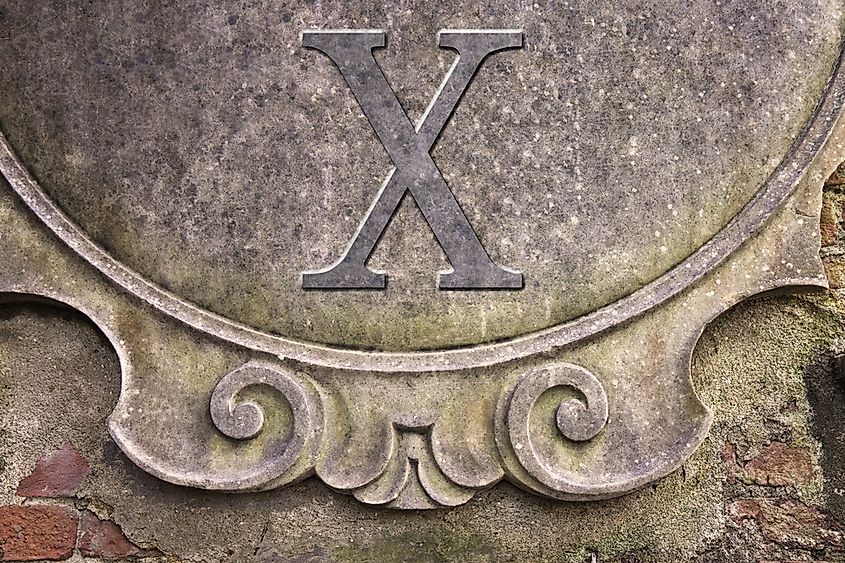What Are Roman Numerals?

- Roman numerals refer to a specific numeral system that can be traced back to ancient Rome and were the primary way of writing numbers in Europe until the Middle Ages.
- The numbers are represented as letters in this system, and by using a combination of various letters, we can create larger numbers.
- There are seven main symbols used today, and each one corresponds to a fixed value. The symbols used are I, V, X, L, C, D, and M, and they stand for the numbers 1, 5, 10, 50, 100, 500, and 1,000, respectively. By combining these letters, we can write every number.
- Total consistency in Roman numerals never existed, and some people even went so far as to try defending that because it gave them more flexibility.
Roman numerals refer to a specific numeral system that can be traced back to ancient Rome and were the primary way of writing numbers in Europe until the Middle Ages. It is still used occasionally today, in specific cases. The numbers are represented as letters in this system, and by using a combination of various letters, we can create larger numbers.
The letters used are from the Latin alphabet. There are seven main symbols used today, and each one corresponds to a fixed value. The symbols used are I, V, X, L, C, D, and M, and they stand for the numbers 1, 5, 10, 50, 100, 500, and 1,000, respectively. By combining these letters, we can write every number. One thing that needs to be noted is that if we place a symbol before another, we subtract its value, but if we place it after another, we add its value. For example, 9 is IX, and 150 is CL.
The Principle Behind Roman Numerals
Roman numerals continued seeing use long after the Roman Empire was destroyed. However, they started seeing far less use starting with the 14th century. This was when Arabic numerals replaced them. This was a gradual process, however, and we can see roman numerals being used to this day in specific forms. For example, we can see them used on many clock faces, such as the clock on Big Ben.

The twelve numbers on the clock from 1 to 12 are depicted as I, II, III, IV, V VI, VII, VIII, IX, X, XI, and XII. As previously explained, the number IV is four and should be read as one less than five. On the other hand, VIII is three more than five, meaning eight. We also use these numerals today to write years on monuments, and they are often used for copyright dates in various forms of media.
We need to use the symbol for 1,000 if we want to write years, so for example, 1900 would be written as MCM. This can be read as “a thousand, and one hundred less than another thousand.” We add other symbols for more years, so 1945 would be MCMXLV. The year 2020 would be MMXX.
The Problem With Roman Numerals
There are several variants of Roman numerals, but the most common one is the standard form. Throughout the age of the Roman Empire, more and more people began using different versions of the system, and things got hectic fast.
This continued in medieval times when it became truly chaotic. This is possibly one of the reasons why people decided to switch to Arabic numbers as the official ones. The Roman numerals just had too many different variations, and people could not agree on a specific one.

Total consistency in Roman numerals never existed, and some people even went so far as to try defending that because it gave them more flexibility. However, this could cause significant problems if used on legally binding documents, and it may invalidate them entirely if misused, or if a different variant is used. It might be correct, but anyone can say that it makes the document invalid.
This is why Arabic numbers are preferably used in these types of situations. The standard form of Roman numerals is the one that is universally used to this day, and while the other variants saw some use in the past, their usage has entirely disappeared in modern times.











